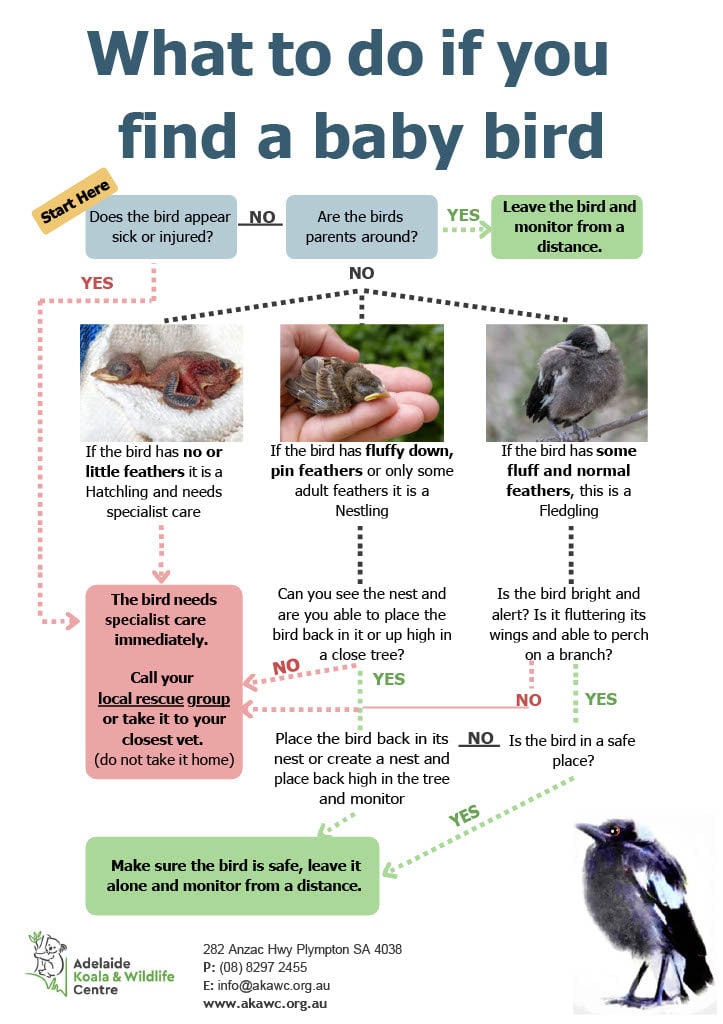
Caring for a Baby Bird: A Comprehensive Guide
Introduction
Baby birds, with their delicate bodies and vulnerable nature, require specialized care to thrive. Whether you’ve stumbled upon an orphaned chick or are fostering a hatchling, understanding their unique needs is crucial for their well-being. This comprehensive guide will provide you with all the essential information on how to care for a baby bird, ensuring its health and survival.
Step 1: Assessing the Situation
- Determine the Bird’s Age: Observe the bird’s size, feather development, and behavior to estimate its age.
- Identify the Bird Species: If possible, identify the bird species to determine its specific dietary and care requirements.
- Check for Injuries: Gently examine the bird for any visible injuries or wounds.
Step 2: Providing Shelter and Warmth
- Create a Nest: Line a small box or basket with soft materials like cotton balls or shredded paper to create a cozy nest.
- Maintain Warmth: Baby birds cannot regulate their body temperature, so provide a heat source such as a heating pad set on low or a warm water bottle wrapped in a towel.
- Avoid Overcrowding: If multiple baby birds are present, ensure they have enough space to move around comfortably.
Step 3: Feeding the Baby Bird
- Determine the Bird’s Diet: Different bird species have varying dietary needs. Consult a veterinarian or experienced bird rehabilitator for specific feeding instructions.
- Formula Feeding: For orphaned or very young birds, use a specialized baby bird formula available at pet stores.
- Hand Feeding: Gently hold the bird in one hand and use a syringe or dropper to feed it the formula.
- Feeding Frequency: Feed the bird every 1-2 hours during the day and every 2-3 hours at night.
Step 4: Hygiene and Sanitation
- Keep the Nest Clean: Regularly remove soiled bedding and replace it with fresh materials.
- Clean the Bird’s Beak and Vent: Gently wipe the bird’s beak and vent area with a damp cloth to remove any food residue or droppings.
- Avoid Bathing: Baby birds should not be bathed, as it can shock their system.
Step 5: Socialization and Enrichment
- Handle with Care: Handle the bird only when necessary and always support its head and body.
- Provide Stimulation: Place toys or objects in the nest to encourage the bird’s curiosity and development.
- Talk to the Bird: Talk to the bird in a soft and soothing voice to provide comfort and familiarity.
Step 6: Monitoring the Bird’s Health
- Observe Behavior: Pay attention to the bird’s behavior, including its activity level, appetite, and droppings.
- Check for Signs of Illness: Look for symptoms such as lethargy, labored breathing, or discharge from the eyes or nose.
- Seek Veterinary Care: If you notice any signs of illness, contact a veterinarian or wildlife rehabilitator immediately.
Step 7: Preparing for Release
- Gradual Weaning: As the bird grows, gradually reduce the frequency of feedings and introduce solid foods.
- Flight Training: Once the bird has developed its flight feathers, provide it with opportunities to practice flying in a safe and enclosed space.
- Release Location: Choose a release site that is suitable for the bird’s species and has an abundance of food and shelter.
Additional Tips
- Use a Soft Touch: Always handle the bird gently and avoid squeezing or holding it too tightly.
- Avoid Overfeeding: Overfeeding can lead to health problems, so follow the recommended feeding schedule.
- Be Patient: Caring for a baby bird requires patience and dedication. Allow the bird to adjust to its new environment at its own pace.
- Seek Professional Help: If you encounter any difficulties or have concerns about the bird’s health, do not hesitate to seek professional assistance from a veterinarian or wildlife rehabilitator.
Conclusion
Caring for a baby bird is a rewarding experience that requires a deep understanding of their unique needs. By following the guidelines outlined in this guide, you can provide the necessary care and support to ensure the bird’s health, well-being, and eventual release back into the wild. Remember to approach the task with patience, compassion, and a commitment to providing the best possible care for this vulnerable creature.
